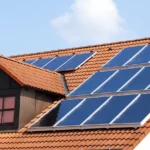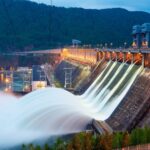How Do Wind Turbines Work? A Simple Explanation
With the global push for cleaner energy and reduced emissions, wind power has become one of the fastest-growing renewable energy sources. But how do wind turbines work? In this beginner-friendly guide, we break down the mechanics, technology, and science behind wind turbines in simple terms.
What Is a Wind Turbine?
Before we dive into the details of how wind turbines work, it’s important to understand what a wind turbine actually is. A wind turbine is a device that converts the kinetic energy from the wind into usable electricity. Modern wind turbines are tall structures with long blades that spin when the wind blows, driving a generator inside the nacelle to produce power.
How Do Wind Turbines Work Step by Step?
The process of generating electricity from wind is surprisingly straightforward when broken down. Here’s a step-by-step explanation of how wind turbines work:
- Wind hits the blades: The wind causes the blades to rotate around a rotor.
- The rotor spins a shaft: The rotor is connected to a main shaft, which spins as the blades turn.
- The shaft connects to a gearbox: The gearbox increases the rotational speed for the generator.
- The generator produces electricity: Mechanical energy is converted into electrical energy inside the generator.
- Electricity flows into the grid: The electricity goes through transformers and into the power grid for use in homes and businesses.
Main Components of a Wind Turbine
To fully grasp how wind turbines work, it helps to know the key parts involved:
- Blades: Usually 3 in number; designed to capture wind energy efficiently.
- Rotor: Connects the blades and spins with them.
- Nacelle: The housing that contains the generator, gearbox, and shaft.
- Gearbox: Converts slow rotation of the blades into faster rotation for the generator.
- Generator: Converts mechanical energy into electrical energy.
- Tower: Supports the turbine and elevates it to capture stronger wind currents.
- Control System: Monitors wind direction, blade position, and system health.
Different Types of Wind Turbines
There are two primary types of wind turbines that work slightly differently:
1. Horizontal Axis Wind Turbines (HAWTs)
The most common design, with blades that rotate on a horizontal axis. These are usually seen in wind farms and rural areas.
2. Vertical Axis Wind Turbines (VAWTs)
Less common, with blades that rotate vertically around the tower. These are more suitable for urban environments.
How Do Wind Turbines Work in Different Wind Conditions?
Wind speed and direction play a crucial role in how wind turbines work efficiently. Modern turbines are equipped with sensors and yaw systems that rotate the nacelle so the blades always face the wind. When the wind speed is too low, the turbine stops to prevent inefficient energy use. If the wind is too strong (over 55 mph or 90 kph), brakes are applied to prevent damage.
How Is the Electricity Used?
After the generator creates electricity, it travels through underground cables to a substation, where it’s transformed into higher voltages suitable for transmission across long distances. This is how electricity from wind farms eventually reaches your home.
Environmental Benefits of Wind Turbines
Understanding how wind turbines work helps us appreciate their contribution to a sustainable future. Some key environmental benefits include:
- Zero carbon emissions during operation
- No water usage (unlike coal or nuclear plants)
- Reversible land use (farms can still be used for agriculture)
- Reduced reliance on fossil fuels
Challenges and Considerations
While wind energy is sustainable, it’s not without its challenges. Intermittency (wind doesn’t always blow), noise concerns, and initial costs can be barriers. However, as technology advances, solutions like battery storage and smarter grid integration are making wind energy more reliable than ever.
Final Thoughts
If you’ve ever wondered how do wind turbines work, now you know the answer is both elegant and impactful. By harnessing a natural, renewable resource, wind turbines provide clean energy to millions of homes around the world. Whether you’re a student, homeowner, or green energy advocate, understanding wind power is key to shaping a sustainable future.
Wind is free, clean, and abundant. Let’s put it to work.




Pingback: Small Wind Turbines for Homes: Are They Effective? -